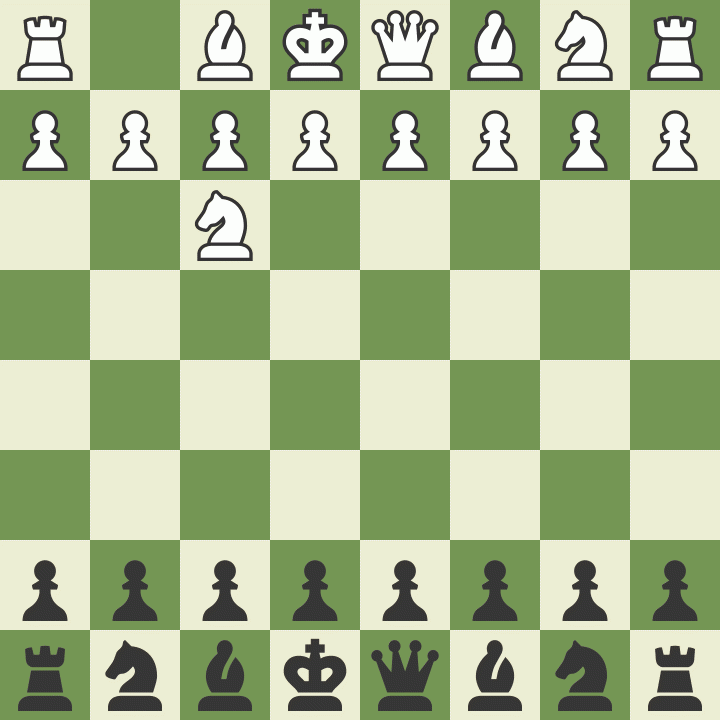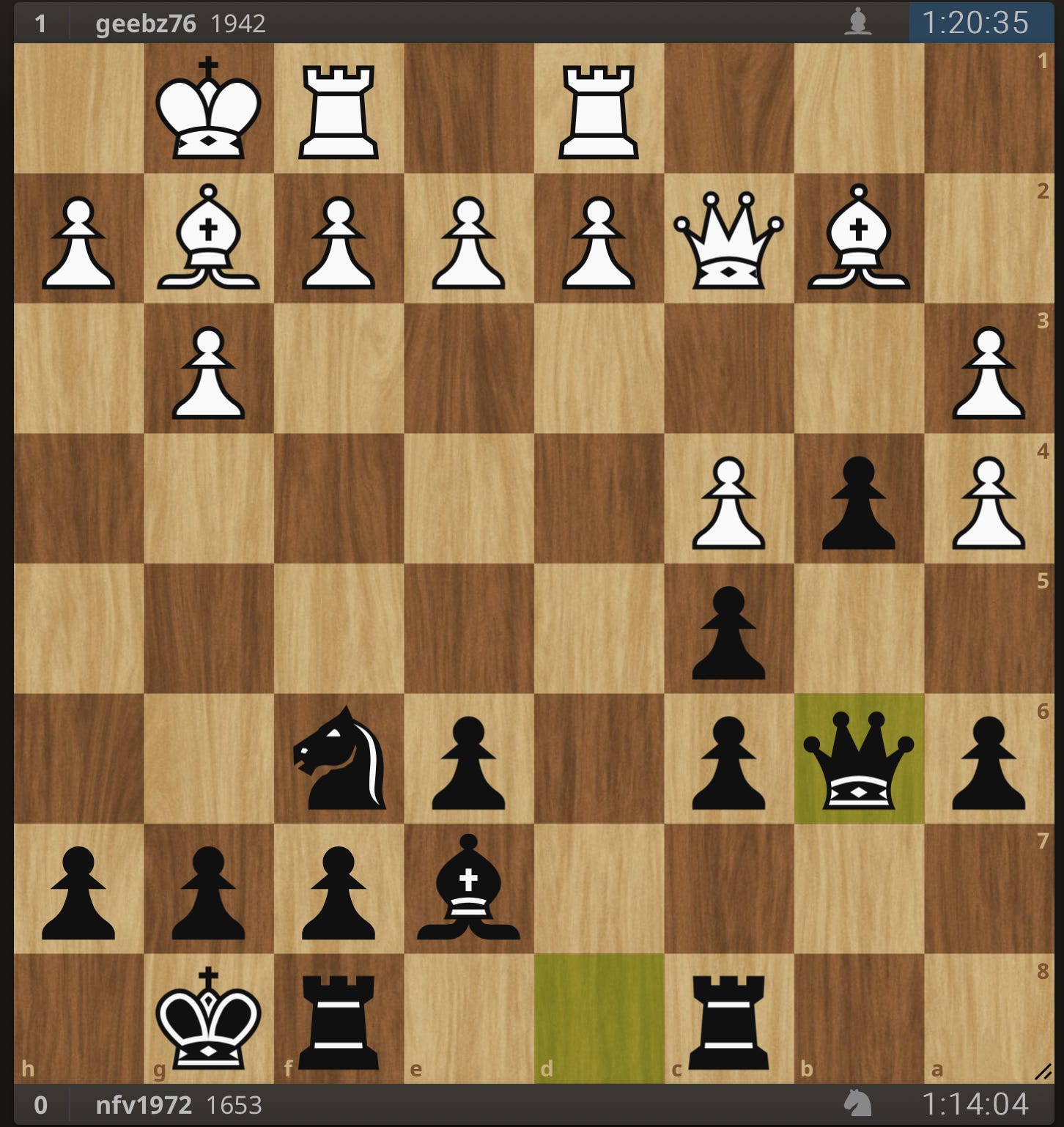Welcome back to the Analyze This! series where I try to learn something from my games (and hopefully so do you). Last week I played this game:
You can find my (non-computer aided) game analysis here. To sum up my learning points:
Develop fast and first! Chess can reasonably be seen as a game where whomever gets the pieces out first wins more often.
I fell into a common trap for myself… trying to mix it up tactically early before my development was finished. As my former coach said… “You went for the brilliancy prize” when I didn’t need to.
Train chess stamina. Due to all the calculating early, I got tired and unfocused later which led to my blundering the game.
Simple chess » complicated chess. There was a point where I was better. Simple moves would have likely won. However I tried for a complicated line and missed my opponents resource. Not good.
Allow me to explain. My opponent was higher rated than me, by some 300 points. We were paired in the Dojo Open Classical Tournament and played a 90 + 30 game. I had time to prep for him and knew he played 1.Nf3 and 2.c4 in every game. I didn’t know what I’d play as I’m not used to it but noticed that there was a line that played very well for Black; 1…Nf6, 2…e6, and 3…a6 (White 29%, Black 29%, Draw 42%)
In the games in this line, Black intends on playing b5 next to contest the c4 pawn. You can find a master game of Aronian vs Ivanchuk with the same line. Sad to say however, this was the extent of my prep.
I found out later in our post mortem that my opponent really struggled with this line. I also found out that he had been trained by none other than GM Silman!! Everything he played was about controlling squares, securing outposts, and getting his pieces onto good squares. I could learn a lot from that approach.
We got to critical moment #1…
There’s a threat to take on b5 that I need to respond to. Objectively the best move is probably Qb5 or Qa5 but I was focused on 7…b4. I liked the idea that I’d force the knight to the edge. Somehow I got fixated that doubling his pawns early would lead to a long term advantage. So I pushed the pawn…
This is a common mistake for me. I get into tactical skirmishes early before I’ve completed development. This is move #7 for me and 4 of the 6 preceding moves have been pawn moves. I really need to develop some more pieces. Based on that logic, Qb6 is a much better move and we keep the tension. (Also, I could have just instead taken on c4 and then followed up with completing development. That was Kortschnoj’s choice.)
However, there is a second threat that b4 didn’t address in this position and that’s d4. The d4 pawn break is key to White’s strategy. Eventually White will fianchetto his bishop on b2 and then push d4, trying to open the position. I need to get developed and my king out of the center before that happens.
After 7..b4 8.Na4 Bc6 (moving a piece twice) 9.Bb2 (developing) Bxa4 10.bxa Nc6 my opponent wisely played 11.Ne4 attacking the knight which was now pinned to the rook by the bishop. We continued 11…Rc8 12.Nxe4 dxc and we got here.
White is better. We both have doubled pawns, but mine control the center squares. My king is in the middle and two moves from safety. White’s pawns on c4 and a4 are potential targets, where Black’s pawns on c5 and c6 appear well defended.
One thing I noted here in the post game analysis… at anytime I could have played a5 solidifying the defense of the potential passed b pawn. It’s not winning, but it does make it harder for White to make progress. I didn’t appreciate the impact of the move and later came to wish I had played it.
So what’s the plan here? Hard to say. I think for Black the idea would be to complete development, solidify the pawns with a5, then focus play on the Queenside to try and get a passed pawn a maybe winning endgame. Seems speculative, but it’s at least a plan. For White, it’s to defend those weak pawns, use the bishops to control the center, and try to get the pawn breaks in on the e and d file. Also, challenging the pawn structure on the Queenside is another option with a3.
White did play a3 later, and I defended with Qb6 and reached critical position #2
White is better here. Moves like d3, e4, Rfe1, or even Ra1 all work to extend White’s advantage. However, White made a critical choice to play axb instead which was a mistake. We go from a position where White is better to dead even after cxb and cxb. A mistake by my opponent. This undoubled my pawns and allowed me to play c5 later, getting a somewhat stable position here.
We both completed development, centralized the rooks and I took the chance to capture on d4 (cxd) leading to critical position #3.
White captured back with the bishop, a slight inaccuracy. Rxd4 was better. Now I’m faced with a position where Black is better. I have a passed b pawn. I have contested control of the d and c files. I have a target with the c4 pawn. What I didn’t fully appreciate was now I also have a place for my knight… on c5. White would love to push the c pawn onto c5 and gain space. I have three quality options here for move 21:
a5! Pushing the a pawn now would prevent white from pushing their a pawn and solidify the passed b pawn. That pawn is the heart of my counter play.
Nd7! Pulling the knight back from exile and onto a useful square. The knight will come to occupy c5, blocking the isolated pawn and exerting some control on the queenside.
Even Qxc4 is good, although not best. After Rc1 Qxc2 R2xc2 White has control over the c file even though Black is up a pawn.
For some reason, I played Nd5? using the pinned c pawn as a path to b6 for the knight to attack the weak pawns. Not good, as they’re both defended already and White can simply take the knight on either d5 or b6… My mistake was playing complex chess when simple chess would do. Put the knight in front of the passed c pawn is a great plan for the knight. Simple is much better than complex.
Later I went on to make a blunder from fatigue. All I can say is I thought I would win a rook after the bishop sac thinking it was undefended. Not only did I miss it was defended, but I also missed the discovered attack tactic my opponent used to win the game. Sad times.
So what did I learn from this analysis?
The opening is as a race to get developed first. Whomever is able to finish development and centralize the rooks is more likely to win thanks to the activity of their pieces and the initiative they can generate.
I’d be better off avoiding tactical skirmishes before I get developed (…unless I’m following sound theory)
Chess stamina is a thing. We get tired from calculating often. I’ll have to be strategic about using my calculation when it’s needed most. A simple question of “Will this move decide the game?'“ can help identify when calculation is needed. It’s ok if I’m wrong, I’ll learn afterwards. I will need to build up my stamina for these long games.
When positions are not critical then simple chess is better than complex chess. Simple chess is about getting your pieces on useful squares. Get open files for rooks, outposts for knights, diagonals for bishops. Try to increase the tension until your opponent makes a mistake.
I hope you learned something, but I know I did. Thanks for reading. I’d love to hear your comments on my analysis and game. Good luck on your chess!










Nd5 reminded me of Jeff Goldblum in Jurassic Park: "Your scientists were so preoccupied with whether or not they could...that they didn't stop to think if they should."
The unnecessary notational mistakes were irritating. I counted 4 of those:
1) after critical moment #1 - Qa5 or Qb5 (did you mean Qb6?)
2) 11. Ne4 (impossible move)
3) 12. Nxe4 (another impossible move)
4) critical positon #2 - ...dead even after cxb and cxb
What was going on there?